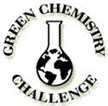Nalco Water Soluble Polymers Win Presidential Green Chemistry Challenge

Industry uses emulsion (as well as dry powder) high-molecular-weight acrylamide polymers to remove suspended solids, organic matter, and other materials from water prior to use. Water treatment polymers are also used as process aids and wastewater treatments.

One-third of a typical emulsion consists of process oil, a refined petroleum mixture that acts as a carrier for the polyacrylamides. Chemists then add 2-10 wt% surfactants to emulsify the oil-based polymers with water.
Prior to use, the water and oil have to be inverted so that the water rather than the oil acts as the continuous phase. This involves pretreating the emulsion with surfactants in mixing equipment before injecting it into the process or waste stream.
According to Nalco, industrial use of emulsion polymers introduces roughly 90 million lb/y of oil and surfactants into the environment.
Although Nalco won the Green Chemistry Challenge Award for its manufacturing process, Ultimer's environmental benefits are most evident at the user level. It not only eliminates environmental discharge of oils and surfactants, but simplifies shipping, handling, and use of water treatment chemicals.
Nalco starts with a multifunctional polyacrylamide that, although enhanced, is a member of the same family already found in the marketplace, explains polymer strategy technical director Neil Marron. Instead of emulsifying the polymers, Nalco uses organic dispersing agents to disperse the molecules in an aqueous salt solution.
"It took us several years from conception to development," Marron continues. "The hardest part was going from a lab bench to production."
The process produces polymer dispersions without the use of hydrocarbon oils and surfactants, and reuses ammonium sulfate, a waste byproduct from caprolactam and other industrial processes. The environmentally friendly process and wide applicability of the resulting product were the reasons it won the Green Chemistry award.
It environmental advantages carry over when Ultimer polymers are used to treat process water and wastewater. Because they are water-based, Ultimer polymers are easier to ship, handle, and use. They do not need to be inverted. They dissolve directly into process or waste water without aging or expensive make-ready systems used by other systems.
The polymers themselves are stable and function over a wide pH range. They also have lower volatile organic carbon (VOC) and biochemical oxygen demand (BOD) content than hydrocarbon-based systems.
During the past four years, Nalco says demand for Ultimer has quadrupled to more than 60 million lb. The company now makes a variety of different Ultimer polymers. Applications range from pulp and paper, chemical processing, refining, brewing, and food processing to primary metals, utilities, and slaughterhouses.
The Presidential Green Chemistry Challenge recognizes wide applicable innovative chemistry that represents realistic solutions to real environmental problems.
Established in 1995, the Presidential Green Chemistry Challenge is a partnership of the US Environmental Protection Agency (EPA), American Chemical Society, and Council for Chemical Research. Nalco was selected by a panel of more industry, university, and government scientific experts from more than 120 nominations.
With 3,000 sales engineers in more than 120 countries, Nalco had nearly $1.6 billion sales of water treatment and process chemicals, services, and systems in 1998.
For more information: Neil Marron, Technical Director, Polymer Strategy Group, Nalco Chemical Co., One Nalco Center, Naperville, IL 60563. Phone: 630-305-2478. Fax: 630-305-2942.
Alan S. Brown
